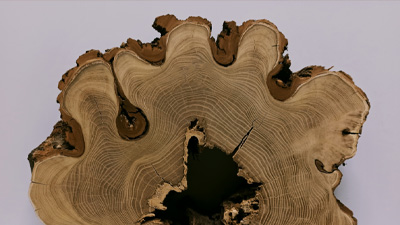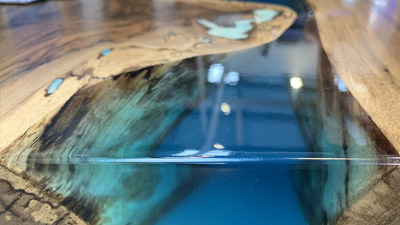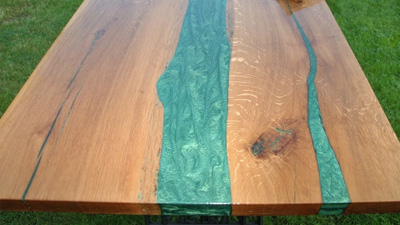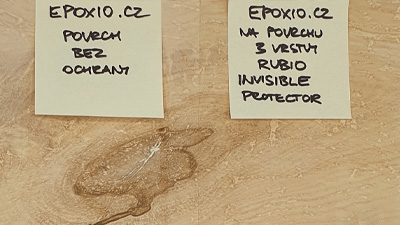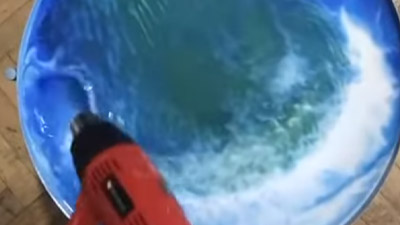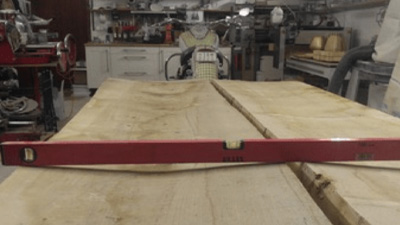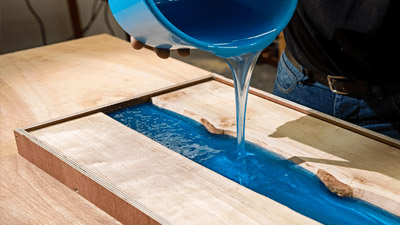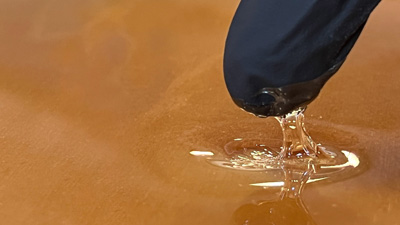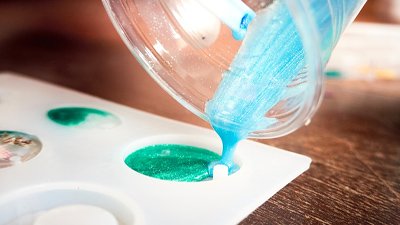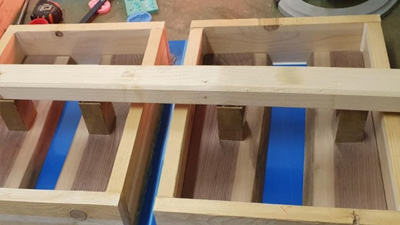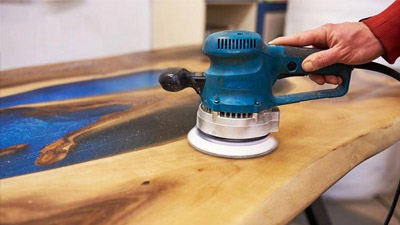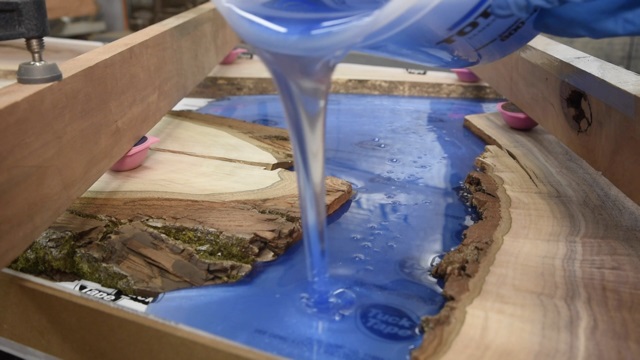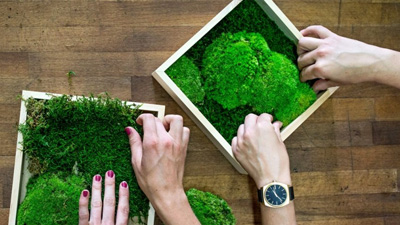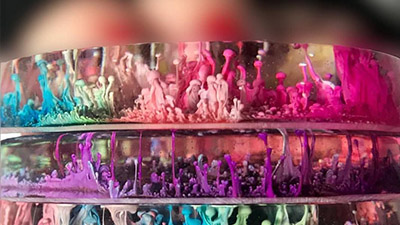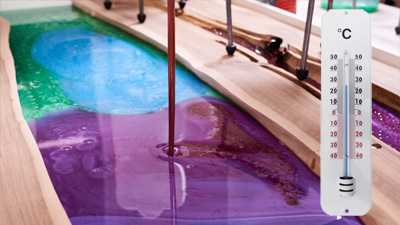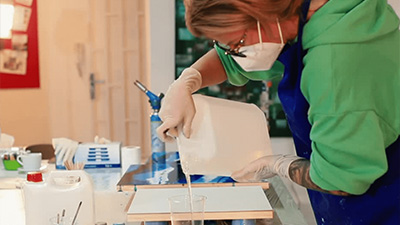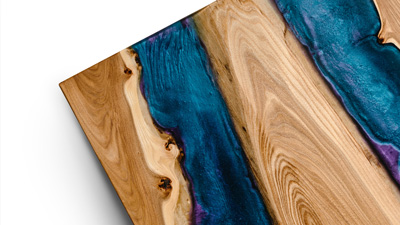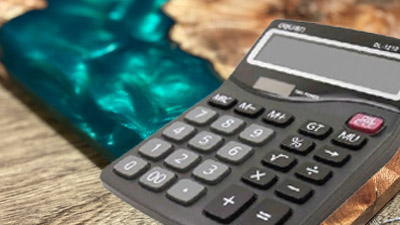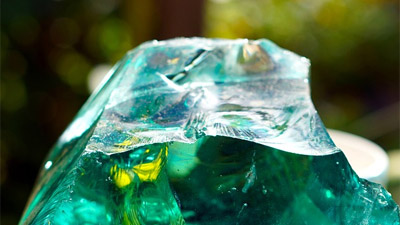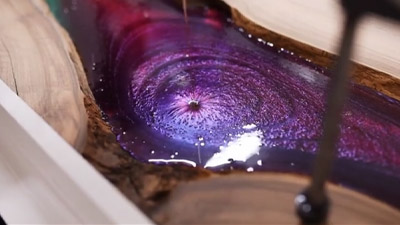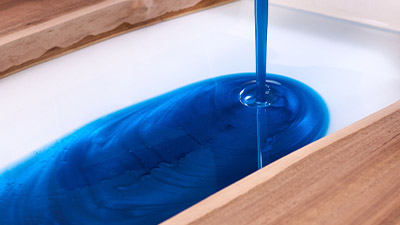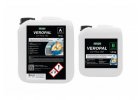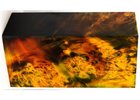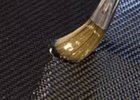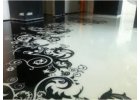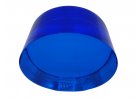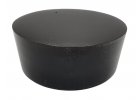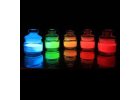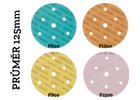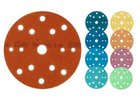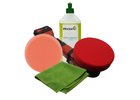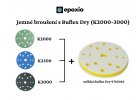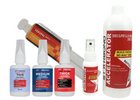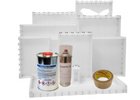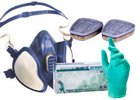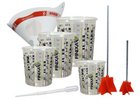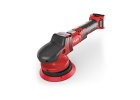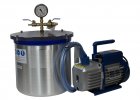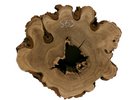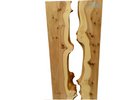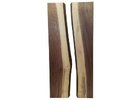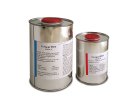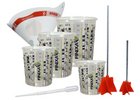1. First, it is important to understand the terminology and vocabulary of the industry surrounding epoxy resin casting. The terms used are very important to understand what people in the industry are talking about and what they are saying, and to be able to ask specific questions.
2. Choose the resin you want to use carefully. Make sure you use the right resin for the right project. Some resins are better suited for tables and large castings, while others are for jewelry, and some are best suited for artwork. At the same time, use compatible dyes and pigments, many a casting has been destroyed by using incorrect or incompatible dyes and pigments (don't be afraid to ask).
3. Familiarize yourself with the Material Safety Data Sheets (SDS) of the resin you are using. They contain the correct safety measures that you should follow when working with it. At a minimum, you will need to wear gloves, protective clothing and work in a well-ventilated environment. More about safety in the article: Safe work with epoxy resin
4. Don't overestimate your abilities. You will definitely not get everything right the first time, so start in small scale. Get important skills and knowledge of how resin behaves over time, become aware of the process and the necessary aids and tools. These experiences are priceless.
5. Store the epoxy resin according to the information in the application sheet. Generally, epoxies are stored in a darker, dry place, preferably not with too much fluctuating temperature. They don't like too much heat, nor cold, direct sunlight and humidity. Improper storage shortens the life of your resin.
11. In general, the ideal room temperature for resin casting is around 21-25 °C with minimal humidity. If your space is cold, consider heating it to that temperature. Temperature is important for proper casting (bubbles) and for proper hardening.
12. It is best to protect the floor in the room with some kind of covering (paper, cardboard, plastic...) against possible dripping or sudden spilling out of the mold.
13. The temperature of the resin and the temperature of the mold should be the same temperature as the room before casting. Therefore, leave the resin with the hardener to temper in the room, ideally transfer it to the room in the evening and leave it there overnight. Adjust the form and the mat with a level.
14. Familiarize yourself with how the separators work – polypropylene tapes, chemical separators, etc.
15. Use accurate scales to weigh the resin. Weigh accurately (especially in low weights), keeping the exact mixing ratio is very important for the subsequent curing of the resin (more information here: Why does epoxy resin not harden or stick after casting?). If it is not accurate, there is a risk of poor curing or even no curing at all. ATTENTION! It is certainly not the case that adding more hardener to the resin will cure it faster or be harder!
16. Thoroughly mix the resin and hardener for at least 3 minutes, trying to scrape the sides and bottom of the mixing bowl. Mix thoroughly, but not at high speeds, so as not to blow air into the resin unnecessarily.
17. Don't assume you can add anything to the resin. Add only trusted and proven compatible pigments and dyes. Among other things, you should be interested in the light fastness of the added dye or pigment. It is also important to mention that the resin does not like moisture, which makes it milky and affects curing.
18. Once you mix the resin with the hardener, there's no way back. Even before that, always make sure that you have everything ready (mold, separator, consumables, tools, tools...).
19. Before pouring after mixing, pour the contents of the mixing container into another mixing container. Now you can still scrape the container into the middle of the other container. Stir the spilled contents in the second container again for at least 2 minutes. With this step, you homogenize the entire volume of the mixing container, including the material at the sides and bottom.
20. When pouring into the mold, always pour the mixed mixture of hardener and resin over something – for example, a stirring stick - so you can better control the flow of resin onto the surface of the mold or creation. To eliminate bubbles when pouring, pour the resin into the mold through a 190µm paint filter – it will help break up and eliminate bubbles when pouring.
21. If you want to see your resin cure without touching the poured surface, keep some resin in a mixing cup and hold it next to the project while it cures. Check the consistency of the resin in the cup. Thanks to this tip, you will not disturb the surface of your casting.
22. Don't waste resin. Always have a series of smaller projects or experiments ready, for which you may use the leftovers from the casting of the main project. For example, try a new type of pigment that you mix into the rest and observe their compatibility. Or you can also try mixing in the pigment at different stages of curing for different effects.
23. To reveal bubbles in the casting, shine a bright light (preferably LED) through the casting.
24. Use a heat gun, flame gun, hair dryer, or bubble pop tool to eliminate bubbles. Apply a hot air in a continuous motion over the cast surface – this will reduce the surface tension on the surface of the cast resin and allow the bubbles to burst.
25. A hair dryer can also be used as an inexpensive heat gun, but it must be set to low air flow, otherwise the force of the air flow could blow your resin out of the mold.
26. Bubbles after casting gradually flow to the surface. Check your casting occasionally and use a heat gun to help eliminate them.
27. If you want to embed an object in resin (especially when making jewelry), first soak the object in the epoxy system before embedding. This will change the surface tension and reduce the likelihood of introducing bubbles. Insert the object into the resin at an angle to avoid trapping bubbles under the inserted object.
28. If you get some epoxy resin on your skin, use baby wipes, they work very well for removal the resin from your skin.
29. To remove unwanted drops from dripped surfaces (e.g. work table), use xylene or acetone moistened paper towels. If necessary, you can let the drops harden and then simply peel off the resin using a heat gun and spatula.
30. When something goes wrong, don't immediately blame the resin. In 99 %, it's operator error. Don't be afraid to admit a mistake, don't be afraid to ask questions, and don't be afraid to ask for help. And above all, don't let a failure or a mistake discourage you, that would be a shame. Everyone makes mistakes.
2. Choose the resin you want to use carefully. Make sure you use the right resin for the right project. Some resins are better suited for tables and large castings, while others are for jewelry, and some are best suited for artwork. At the same time, use compatible dyes and pigments, many a casting has been destroyed by using incorrect or incompatible dyes and pigments (don't be afraid to ask).
3. Familiarize yourself with the Material Safety Data Sheets (SDS) of the resin you are using. They contain the correct safety measures that you should follow when working with it. At a minimum, you will need to wear gloves, protective clothing and work in a well-ventilated environment. More about safety in the article: Safe work with epoxy resin
4. Don't overestimate your abilities. You will definitely not get everything right the first time, so start in small scale. Get important skills and knowledge of how resin behaves over time, become aware of the process and the necessary aids and tools. These experiences are priceless.
5. Store the epoxy resin according to the information in the application sheet. Generally, epoxies are stored in a darker, dry place, preferably not with too much fluctuating temperature. They don't like too much heat, nor cold, direct sunlight and humidity. Improper storage shortens the life of your resin.
6. Prepare for mistakes. Everyone has made them and is making them. It is part of the learning process. It is important to learn from them and not repeat them. Don't let them put you off.
7. Before you start doing anything with the resin, read the resin application sheet thoroughly and pay attention to its parameters. You need to know the mixing ratios, the maximum amount mixed at once, the processing time, the time when you can start demolding, the curing time and most importantly, what the given resin is mainly used for.
8. Allow twice as much time as you think you will need to work with the resin. If you are a beginner, give yourself three times as much time. Take your time, because hurrying leads to more frequent mistakes.
9. Keep a journal. Write down important things about what you did in the process. How much did you weigh and how long did you mix, how much did you add pigment and other ingredients. This information will be useful for you to know what you did, how you did it and what the result was. At the same time, the diary will help you to try again, because you can look back at what mistakes you encountered and avoid them.
10. Choose the right work place where you will cast the resin and where the work can remain undisturbed for several days. And be careful, when casting, you may create a mess (sometimes something drips, something sticks), so let it really be a workplace. It should be as dust-free as possible.
7. Before you start doing anything with the resin, read the resin application sheet thoroughly and pay attention to its parameters. You need to know the mixing ratios, the maximum amount mixed at once, the processing time, the time when you can start demolding, the curing time and most importantly, what the given resin is mainly used for.
8. Allow twice as much time as you think you will need to work with the resin. If you are a beginner, give yourself three times as much time. Take your time, because hurrying leads to more frequent mistakes.
9. Keep a journal. Write down important things about what you did in the process. How much did you weigh and how long did you mix, how much did you add pigment and other ingredients. This information will be useful for you to know what you did, how you did it and what the result was. At the same time, the diary will help you to try again, because you can look back at what mistakes you encountered and avoid them.
10. Choose the right work place where you will cast the resin and where the work can remain undisturbed for several days. And be careful, when casting, you may create a mess (sometimes something drips, something sticks), so let it really be a workplace. It should be as dust-free as possible.
12. It is best to protect the floor in the room with some kind of covering (paper, cardboard, plastic...) against possible dripping or sudden spilling out of the mold.
13. The temperature of the resin and the temperature of the mold should be the same temperature as the room before casting. Therefore, leave the resin with the hardener to temper in the room, ideally transfer it to the room in the evening and leave it there overnight. Adjust the form and the mat with a level.
14. Familiarize yourself with how the separators work – polypropylene tapes, chemical separators, etc.
15. Use accurate scales to weigh the resin. Weigh accurately (especially in low weights), keeping the exact mixing ratio is very important for the subsequent curing of the resin (more information here: Why does epoxy resin not harden or stick after casting?). If it is not accurate, there is a risk of poor curing or even no curing at all. ATTENTION! It is certainly not the case that adding more hardener to the resin will cure it faster or be harder!
17. Don't assume you can add anything to the resin. Add only trusted and proven compatible pigments and dyes. Among other things, you should be interested in the light fastness of the added dye or pigment. It is also important to mention that the resin does not like moisture, which makes it milky and affects curing.
18. Once you mix the resin with the hardener, there's no way back. Even before that, always make sure that you have everything ready (mold, separator, consumables, tools, tools...).
19. Before pouring after mixing, pour the contents of the mixing container into another mixing container. Now you can still scrape the container into the middle of the other container. Stir the spilled contents in the second container again for at least 2 minutes. With this step, you homogenize the entire volume of the mixing container, including the material at the sides and bottom.
20. When pouring into the mold, always pour the mixed mixture of hardener and resin over something – for example, a stirring stick - so you can better control the flow of resin onto the surface of the mold or creation. To eliminate bubbles when pouring, pour the resin into the mold through a 190µm paint filter – it will help break up and eliminate bubbles when pouring.
22. Don't waste resin. Always have a series of smaller projects or experiments ready, for which you may use the leftovers from the casting of the main project. For example, try a new type of pigment that you mix into the rest and observe their compatibility. Or you can also try mixing in the pigment at different stages of curing for different effects.
23. To reveal bubbles in the casting, shine a bright light (preferably LED) through the casting.
24. Use a heat gun, flame gun, hair dryer, or bubble pop tool to eliminate bubbles. Apply a hot air in a continuous motion over the cast surface – this will reduce the surface tension on the surface of the cast resin and allow the bubbles to burst.
25. A hair dryer can also be used as an inexpensive heat gun, but it must be set to low air flow, otherwise the force of the air flow could blow your resin out of the mold.
27. If you want to embed an object in resin (especially when making jewelry), first soak the object in the epoxy system before embedding. This will change the surface tension and reduce the likelihood of introducing bubbles. Insert the object into the resin at an angle to avoid trapping bubbles under the inserted object.
28. If you get some epoxy resin on your skin, use baby wipes, they work very well for removal the resin from your skin.
29. To remove unwanted drops from dripped surfaces (e.g. work table), use xylene or acetone moistened paper towels. If necessary, you can let the drops harden and then simply peel off the resin using a heat gun and spatula.
30. When something goes wrong, don't immediately blame the resin. In 99 %, it's operator error. Don't be afraid to admit a mistake, don't be afraid to ask questions, and don't be afraid to ask for help. And above all, don't let a failure or a mistake discourage you, that would be a shame. Everyone makes mistakes.






